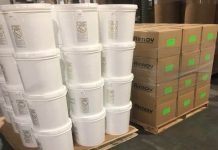It is believed that seven coffee beans were smuggled from Yemen and brought to South India, where they were planted. That’s how Indians were first acquainted with coffee. Through its journey of evolution, the daily cup of Joe has advanced from the traditinal South Indian filter coffee to instant coffee in India. Today, coffee drinkers find their daily caffeine dose in spoonfuls of instant coffee. Revenue in the instant coffee segment in India stands at US$ 206 million in 2018 and is expected to rise by 5.9% annually (CAGR 2018-2021), according to a report by statista.com. The dominant players in the instant coffee market remain Nestle’s Nescafe and Unilever’s Bru.
The brands have added a new segment to instant coffee – coffee premix, a blend of coffee powder with milk powder, sugar, preservatives and flavors. The demand for coffee premix is increasing both for personal consumption as well as at Quick Service Restaurants (QSRs), giving a significant boost to the coffee premix market. QSRs, especially, are a big opportunity for the coffee premix market to tap.
A quick stroll through the Reliance Fresh store, a super market in Jaipur, presented stacks of coffee premix placed right next to instant coffee. The different variants of coffee premix by Nescafe were displayed right next to each other, vying for shoppers’ attentive eyes.
Premiumization
Going by the trends today, Indians are choosing convenience over authenticity. Coffee lovers prefer instant coffee over its traditional counterpart as it comes with an advantage of being time and cost effective. Keeping in mind this changing buying behavior of consumers, giant coffee players such as Nescafe by Nestle have launched coffee premix, which is a balanced combination of coffee, milk and sugar that simply needs to be mixed with water or milk to prepare a cup of coffee.
Nescafe claims to provide a variety of gourmet recipes in its instant coffee segment. The brand introduced two variants to its coffee premix segment – cappuccino and chocomocha – to woo Indian consumers. It packaged the variants in sachets that came in a monocarton box. The packaging with a brown base and a splash of red and purple, displays an ‘adult’s GDA (Guidelines Dairy Amounts)’ on the front, giving the exact amount of sugar, total fat, saturated fat, energy, and sodium in one serving. The packaging further claims that the drink has a ‘richy aroma’ and is ‘deliciously frothy’ while connoting the ‘cafe experience’ in an attempt to premiumize the product.
The instant of them all

by Nescafe in carton packaging with
sachets inside.
While the sachets in monocarton boxes found many takers, Nescafe decided to take it a level up for the convenience of on-the-go consumers by introducing its coffee premix in an easy-to-carry cup packaging. The cup, with a lid on top, contains a sachet of coffee premix that can pe poured into the cup with hot water to prepare the drink. The advertisement of the product refers to it as ‘The cup that gets you going,’ perhaps symbolizing its instant nature. Priced at INR 25, the cup further reinforces its nature as an on-the-go product. The product is especially designed for consumers who are constantly on the move and hardly get time to sit at one place to consume their favorite drink. While this is a relatively niche format for now, offering coffee lovers the choice to have a quick cup instantly without brewing, the instant nature of the product robs the user of the choice to adjust the amount of milk or sugar in their drink.










